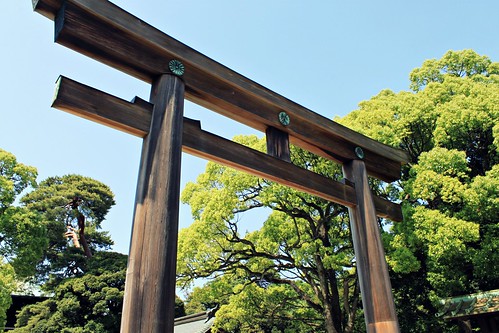

Meiji Shrine, Shibuya, Tokyo
The shrine dedicated to the Emperor Meiji manifests itself as a survival strategy in which functional addendum to its original architecture (built in 1912) plays a crucial role. As a respected shrine of emperor as a precursor of "enlightened rule" (refer to Meiji Restoration) and an architectural symbol, the destruction of the original shrine during the WWII did not deter the citizens from restoration through great efforts.
The shrine complex reveals its rich symbolic and 'utilitarian' significance as a collage of its existing precincts and surrounding landscape. Its presence symbolizes Japan's unique cultural ideology of Shintoism (imperial) and serves as a physical arena for the religious practices. In addition to its apparent deistic significance, its key survival rests on the addendum of 175 acres of surrounding arboretum that now serves as a natural museum of hundreds of donated species of trees; the inner and the outer precinct of the complex that house the memento of the emperor and the empress; the Meiji Memorial Hall that is now used for Shinto weddings.
The sheer beauty and the viability of the Meiji Shrine Complex comes from its aesthetic and architectural beauty as well as its service as a cultural relic, a living museum, a temple, and a wedding platform and much more.

No comments:
Post a Comment